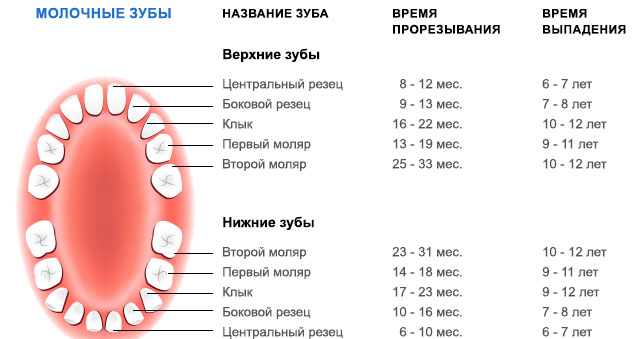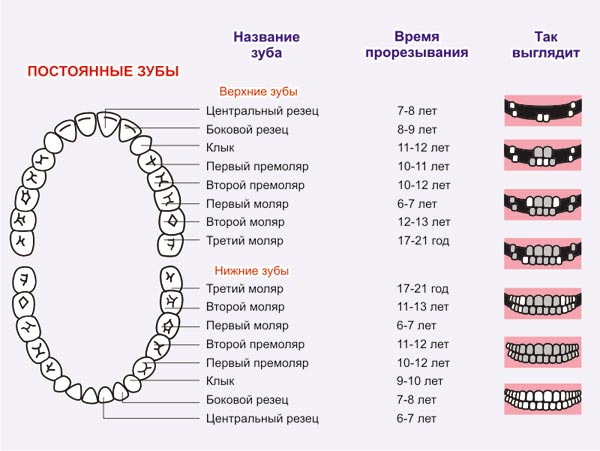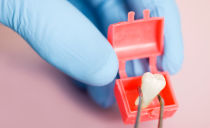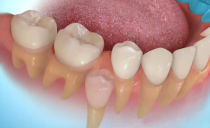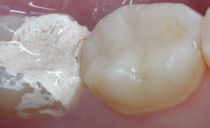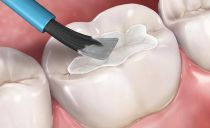How many teeth should an adult have
When asked how many teeth an adult should have, everyone will immediately answer: normal, 32 teeth. But if you approach the topic seriously and calculate the number of teeth on the upper and lower jaw, you can come in surprise, because there will be less than the expected number. We will try to find out why this happens, which cases can be considered the norm, and which require medical attention.
Content
Features of the growth of primary teeth
In infants, the teeth are completely absent. Sometimes there have been cases of the birth of children with a pair of dairy elements, but a similar circumstance is an exception. Pediatricians say that teething should begin at about 7-8 months of the baby's life, but situations are not uncommon when parents notice the appearance of the first incisors already at 4-5 months.
All milk teeth grow to the age of three years, but often there is a shift of this general date by six months in one direction or another. According to experts in the field of dentistry, this development is normal.
Teething procedure
The chronology of the formation of milk dental composition in infants is as follows:
- The incisors are the first to erupt in the oral cavity. By 8–9 months, their number should be equal to 4: two each from above and below.
- To achieve a baby's year, the jaw row should have eight to ten teeth, but sometimes there are twelve, which is again the norm. At this time, the lateral incisors grow.
- By the age of two, a small person has eighteen to twenty elements in his mouth. By 18 months, the first molars appear, by 24, fangs, and then the second molars. Thus, by 2 years, a person has 8 incisors and molars, as well as 4 canines.
- After two years and 6 months, the so-called rest period sets in when tooth growth slows down. But the little man has enough for chewing food and twenty that are available. At this age, an important task for parents is the hygienic education of children, an explanation of the need to maintain cleanliness and oral health.
How many permanent teeth are in adults?
Normally, an adult should have 32 teeth: 16 on top and bottom, respectively. The dental composition on the upper and lower jaw is the same, only the shape of its individual elements can slightly differ.
Incisors
The number of permanent incisors in an adult is equal to the number of milk teeth of the same name in children: 4 on each jaw. They can be central and lateral. The central elements are large in the upper row, and the lateral ones in the lower row. This formation allows them to optimally perform the function of biting off, “cutting” pieces of food.
Fangs
Both children and mature people have 4: 2 teeth on top and 2 on the bottom. The shape of the fangs is very similar to that found in carnivores.
Permanent teeth
Perform the function of chewing, grinding food, can be of two types:
- Premolars or small indigenous. The number of such teeth in an adult is usually eight: 2 pairs on each jaw. They are located between the fangs and molars. One premolar has a rounded shape and is placed at an angle to the tongue. The second premolar is larger than its fellow, covered with pronounced tubercles from above.
- Large indigenous or molars. An adult has 12 such teeth, they differ in type.The first molars have a large size, rectangular shape, pronounced tubercles and two roots, each of which has one dental canal.
The second and third molars are similar to the first, some differences are only in the form of fissure and tubercles.
The teeth of wisdom - the third molars - in adults are usually four, but sometimes they can be less, or they do not grow at all. In the absence of wisdom teeth in a person's mouth, there are 28 positions. For what reasons this happens, read below.
Why not all people have wisdom teeth
No wonder the teeth of wisdom received this name, since they appear in already adult people - from 18 to 25–26 years old. These teeth often do not grow in full, for example, one on each jaw, or do not erupt at all. If the growth of the third molars went without complications, the discomfort went away after complete eruption, then any number of them will be a variant of the norm.
Conclusion: 32 permanent teeth in humans are the standard norm, along with “wise” teeth. But for many people, only 28 permanent teeth grow, and dentists also refer to the norm, saying that in the course of evolution the “wise” elements can disappear altogether.
In rare cases, on the contrary, a person has 33 teeth, the fifth "sage" is cut in the front of the row. Such a phenomenon entails discomfort and a damaged aesthetics of the jaw, so the extra element must be removed.
According to experts, an additional third molar is a deviation from the norm, which is laid during intrauterine formation. For example, if the pregnancy was multiple and one of the embryos died, passing the “extra” tooth to the brother or sister.
Modern dentistry helps to easily cope with any dental ailments. But, as before, the main condition for dental health is daily two-time brushing, a visit to the dentist at least once every six months and timely treatment of dental diseases.


